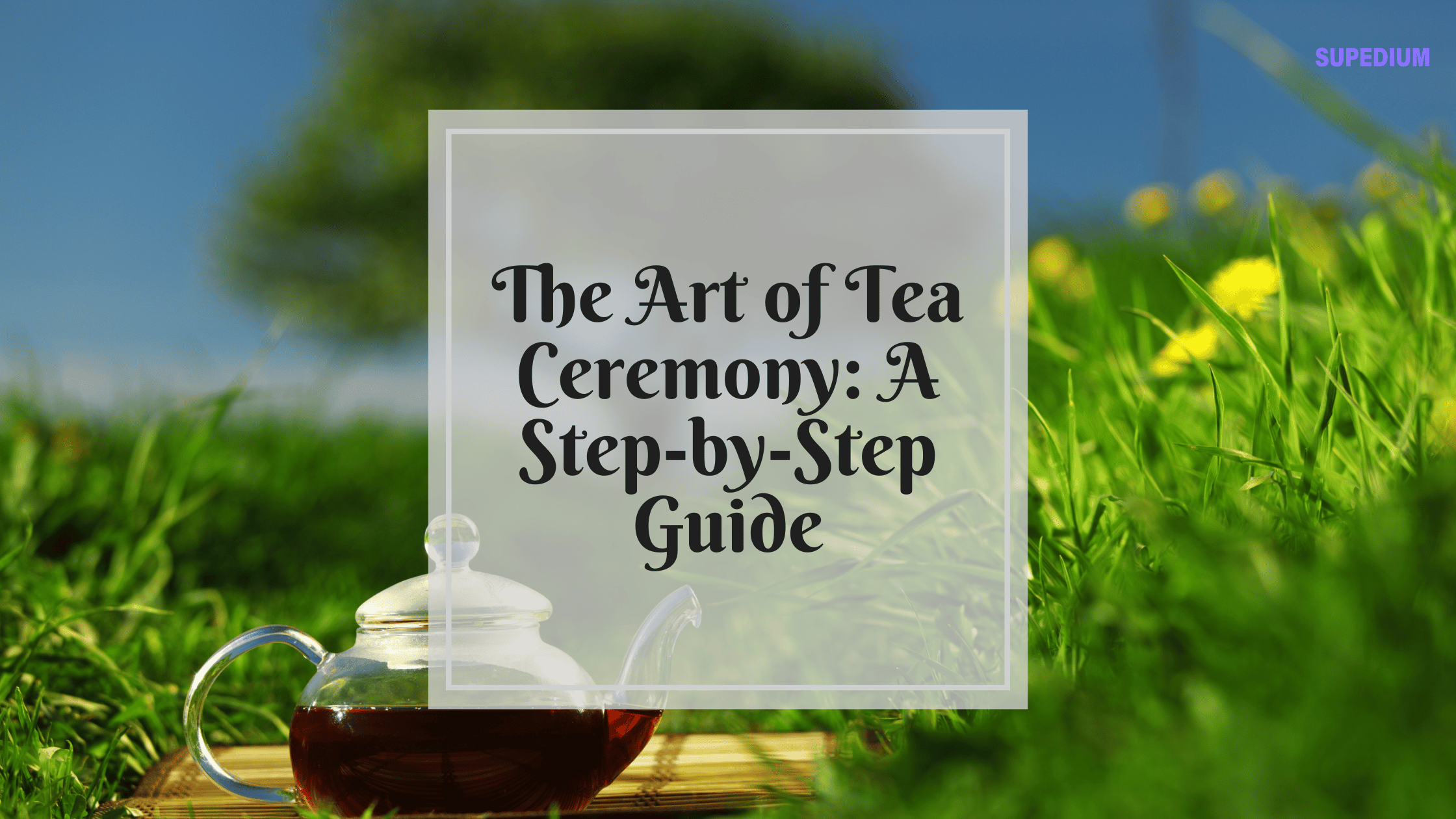Table of Contents
![]()
Tea ceremonies are more than just rituals; they are a profound expression of culture, philosophy, and artistry. This guide delves into the significance of tea ceremonies around the world, offering a detailed overview of their history, types, essential tools, preparation steps, and the experience they provide.
I. Introduction
The tea ceremony is a ceremonial preparation and consumption of tea, celebrated for its intricate rituals and cultural significance. These ceremonies serve as a medium for social interaction, personal reflection, and an appreciation of tea as an art form. Across various cultures—most notably in Japan, China, and Britain—tea ceremonies reflect distinct philosophies and practices that honor both the drink and the company.
II. Historical Context
A. Origins of Tea and the Evolution of Tea Ceremonies
Tea has a rich history that dates back thousands of years, with origins traced to ancient China. The first documented instances of tea drinking appeared during the Tang dynasty (618–907 AD), and it gradually spread to other cultures, particularly to Japan in the late 8th century.
B. Influence on Culture and Social Interactions
Tea ceremonies have evolved to represent more than just the act of drinking tea. In Japan, the tea ceremony (Chanoyu) embodies the principles of harmony, respect, purity, and tranquility, while in Britain, the afternoon tea tradition serves as a social gathering that promotes camaraderie and etiquette.
III. Types of Tea Ceremonies
A. Japanese Tea Ceremony (Chanoyu)
The Japanese tea ceremony emphasizes aesthetics and philosophy. It incorporates elements of wabi-sabi, the beauty of imperfection, into its rituals. Participants engage in a carefully choreographed process that includes the preparation of matcha, a finely ground green tea.
B. Chinese Tea Ceremony (Gongfu Cha)
The Chinese tea ceremony, known as Gongfu Cha, focuses on the art of brewing high-quality tea with precision. This ceremony values the flavor and aroma of the tea leaves, often utilizing various brewing techniques and equipment to enhance the experience.
C. British Afternoon Tea
Originating in the early 19th century, British afternoon tea is a social event that combines tea with light refreshments, such as sandwiches and pastries. It emphasizes etiquette and conversation, fostering a sense of community and social interaction.
IV. Essential Tools and Ingredients
A. Common Tools for Various Tea Ceremonies
- Teapots and Cups: Essential for brewing and serving tea.
- Strainers and Tea Caddies: Used to manage tea leaves and preserve freshness.
- Whisks and Bowls (for Japanese tea): Crucial for preparing matcha.
B. Types of Tea Used in Different Ceremonies
Different ceremonies employ specific types of tea:
- Japanese: Primarily matcha.
- Chinese: A variety of teas, including oolong and pu-erh.
- British: Black teas like Earl Grey and Assam.
V. Preparing for the Ceremony
A. Setting the Scene
Creating an appropriate atmosphere is vital. Select a serene location, free from distractions. Arrange the space with aesthetic elements that reflect the philosophy of the ceremony, whether it’s simplicity in Japanese tradition or elegance in British afternoon tea.
B. Selecting and Preparing the Tea
Choosing high-quality tea leaves is crucial. Different types require different water temperatures and steeping times to achieve the best flavor. Familiarize yourself with these details to enhance the experience.
C. Gathering and Preparing Tools
Ensure all tools are clean and arranged neatly. This preparation reflects the respect and care embedded in the ceremony.
VI. Step-by-Step Guide to Conducting a Tea Ceremony
A. Welcoming Guests
Begin by warmly welcoming your guests. Establish a relaxed environment, allowing them to engage in conversation while appreciating the setting. Ritual greetings, such as bowing in Japanese tradition, enhance the ceremonial aspect.
B. Brewing the Tea
Follow the specific techniques for your chosen type of tea:
- Japanese: Heat water, whisk matcha with a bamboo whisk, and serve in a traditional bowl.
- Chinese: Use a gaiwan or teapot to steep the tea, paying attention to the timing for optimal flavor.
C. Serving the Tea
Serve the tea with grace. In Japanese ceremonies, the host presents the tea bowl to the guest with both hands. In British traditions, tea is poured into cups, often accompanied by milk or lemon.
D. Enjoying the Tea
Encourage guests to appreciate the flavors and aromas of the tea. This moment of mindfulness promotes connection and conversation. Discuss the taste, the experience, and the significance of the ceremony.
VII. The Experience and Philosophy
A. The Role of Mindfulness and Presence
Tea ceremonies encourage mindfulness, allowing participants to slow down and appreciate the moment. The act of preparing and enjoying tea becomes a meditative practice.
B. Importance of Respect and Harmony
Respect for the tea, the tools, and the guests is central to the ceremony. This fosters a harmonious environment where everyone can connect meaningfully.
C. Connection to Nature and Simplicity
Tea ceremonies often celebrate nature, from the ingredients to the setting. This connection promotes an appreciation for simplicity and the beauty of the natural world.
VIII. Conclusion
The art of tea ceremonies transcends mere beverage consumption; it embodies cultural richness, mindfulness, and social connection. Engaging in a tea ceremony can enhance personal reflection and foster deeper relationships with others. As you explore this beautiful tradition, remember that each ceremony is unique and an opportunity to appreciate the art of tea.
Share This





Be the first to comment